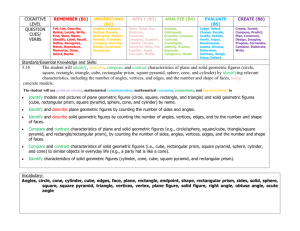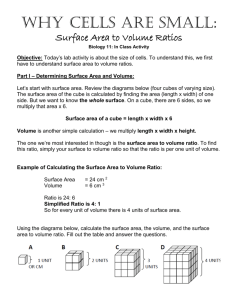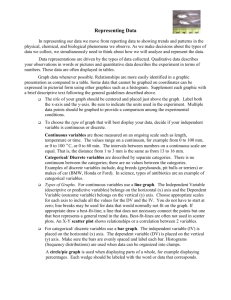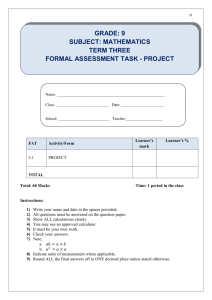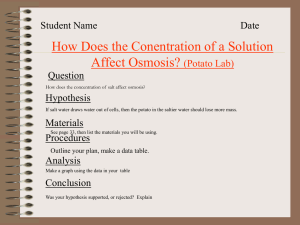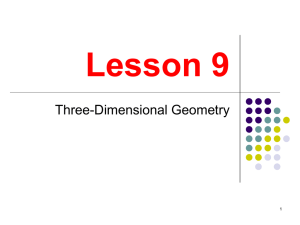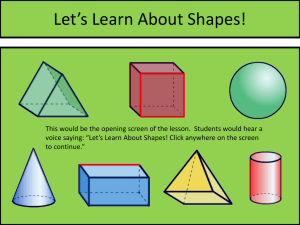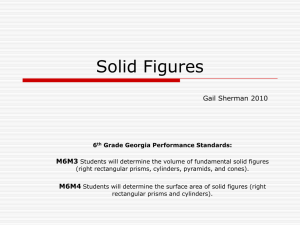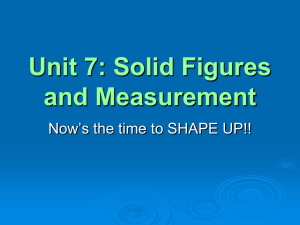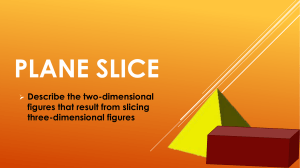Surface Area and Osmosis
advertisement
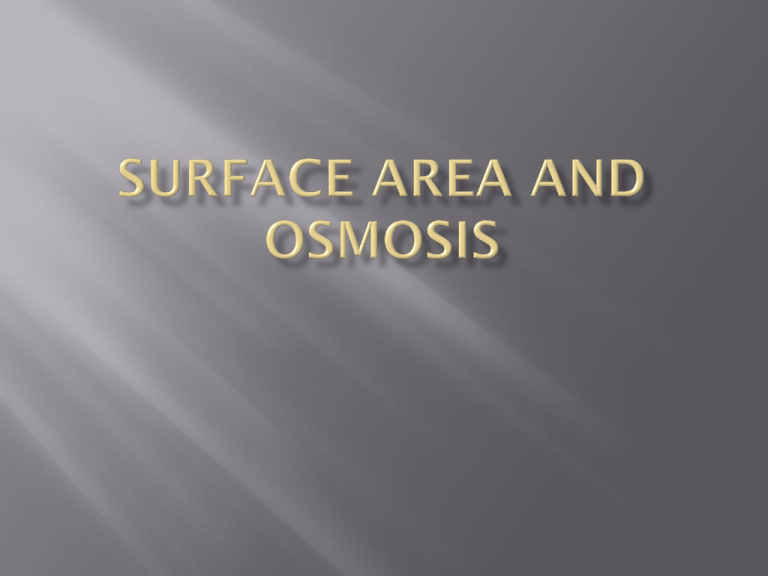
In our lab we attempted to answer the question of if surface area affected osmosis rates. To accomplish this we created 4 different shapes out of potato, each with equal mass, and put them in a 5% salt water environment. After 30 minutes we observed their new masses. We first cut the potato into 4 shapes of equal mass. We then took the measurements of all the shapes in order to calculate the surface area. After that we created a 5% salt solution by first placing 15 grams of salt in a beaker and then filling it until the total volume was 300 ml. After placing the potatoes in these solutions we waited 30 minutes for osmosis to occur. We then weighed the potatoes in order to compare the difference in weight. The molarity of the salt solution was one of the controlled variables because it was at 5% in all 4 cups The shape of the potato and its surface area was the only experimental variable. Temperature was a controlled variable because it was at room temperature for all 4 cups. There was no control because there is no standard shape for a potato. All 4 shapes weighed 6.5 grams before they were placed in the 5% salt solution. After they were placed in the salt then the cube weighed 6.4 grams, the pyramid weighed 6.0 grams, the cylinder weighed 5.7 grams and the rectangular prism weighed 5.7 grams. The surface area of the shapes were 17.9 cm squared for the cube, 20 cm squared for the pyramid, 16.49 cm squared for the cylinder and 34.02 cm squared for the rectangular prism The dimensions of the cube in cm were: Base = 2 Height = 1.7 and Width = 1.5. The dimensions of the pyramid were: Base = 4 and Height = 3. The dimensions of the cylinder were: Radius = .5 and height = 4.75. The dimensions of the rectangular prism were: Height = .3 Base = 4.2 Width = 3.5 The percent change for the cube was 1.5% It was 7.7% for the pyramid. It was 12.3% for the cylinder. It was 12.3% for the rectangular prism. The purpose of this lab was to see if there was a correlation between an objects surface area and shape with the speed at which osmosis occurs. We found that the shape of the object and the shortest distance to the center had more effect on osmosis then the surface area. The rectangular prism and cylinder have a very small distance from the outside to center so their weight changed the most (.8 grams each) while the cube and pyramid had a longer distance to the center so their weight changed less (.1g and .5g) Our hypothesis was that the rate at which diffusion occurred would be proportional to the surface area but it wasn’t so our hypothesis didn’t agree with the results. There were many things that could have gone wrong in our experiment but the main problems were that we couldn’t cut the potato accurately with a ruler and the scale we were using didn’t work properly.
